The Gigabyte GT 1030 Low Profile
The active card is a whole 15.0 cm long (from the outside of the slot panel to the end of the cooler) and 6.5 cm high (from top board slot to top edge cooler). The depth is 1.7 cm and is determined by the slot panel itself. The radiator structure is even narrower.
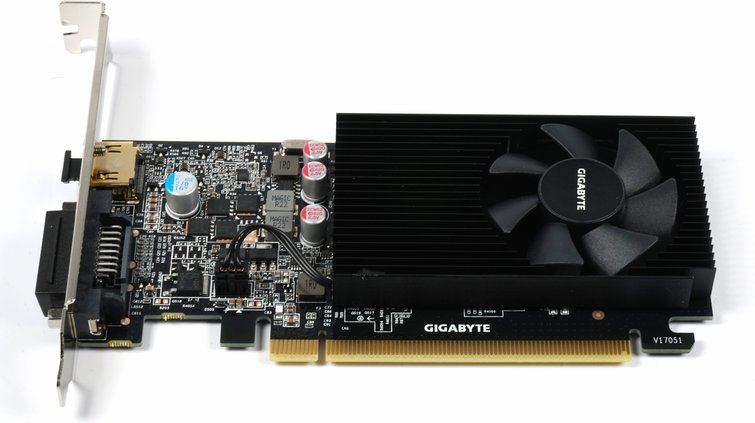
At just 133 grams, the card is an absolute flyweight. The sloblende can be unscrewed quite easily and replaced with the enclosed low-profile aperture.
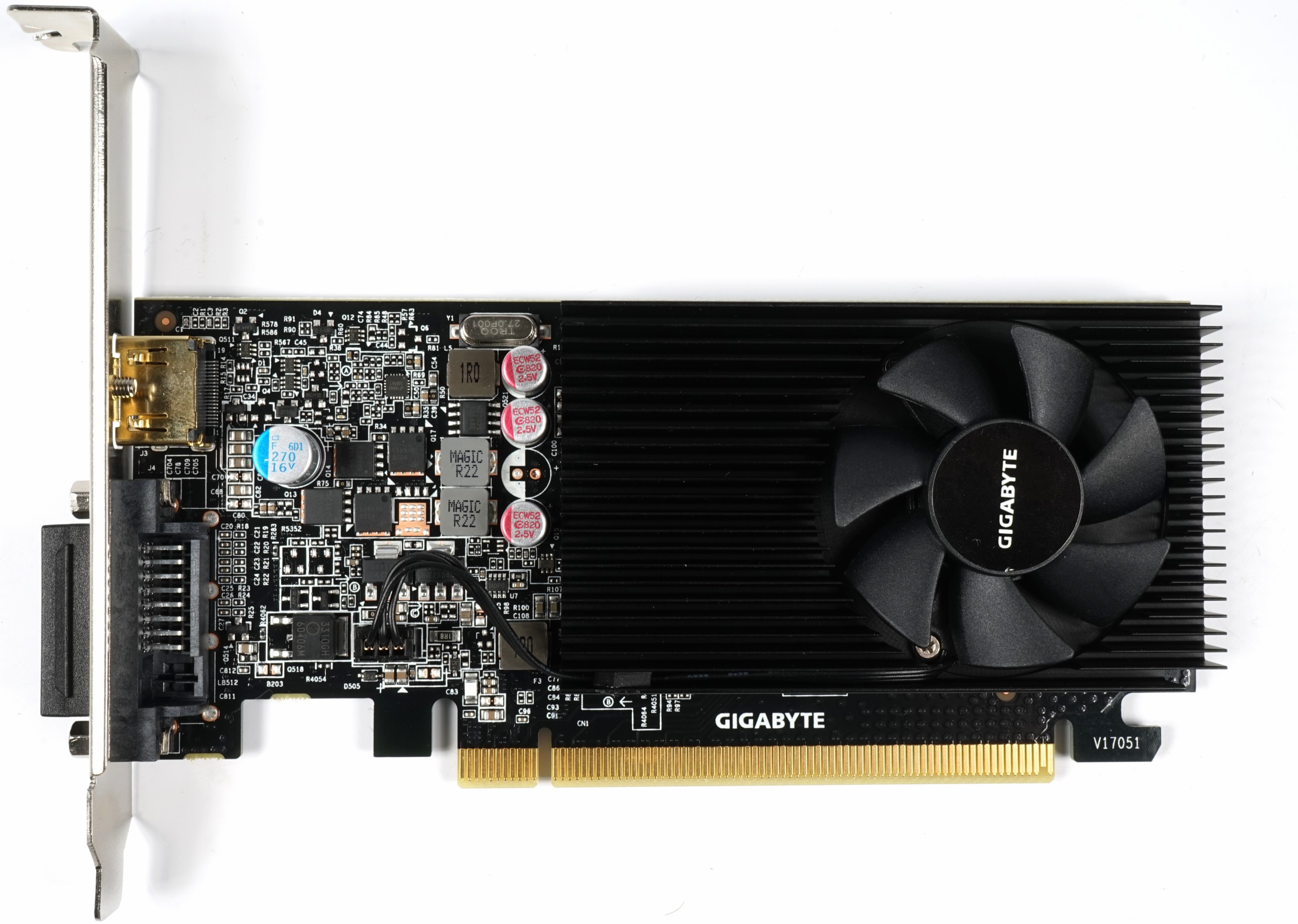 |
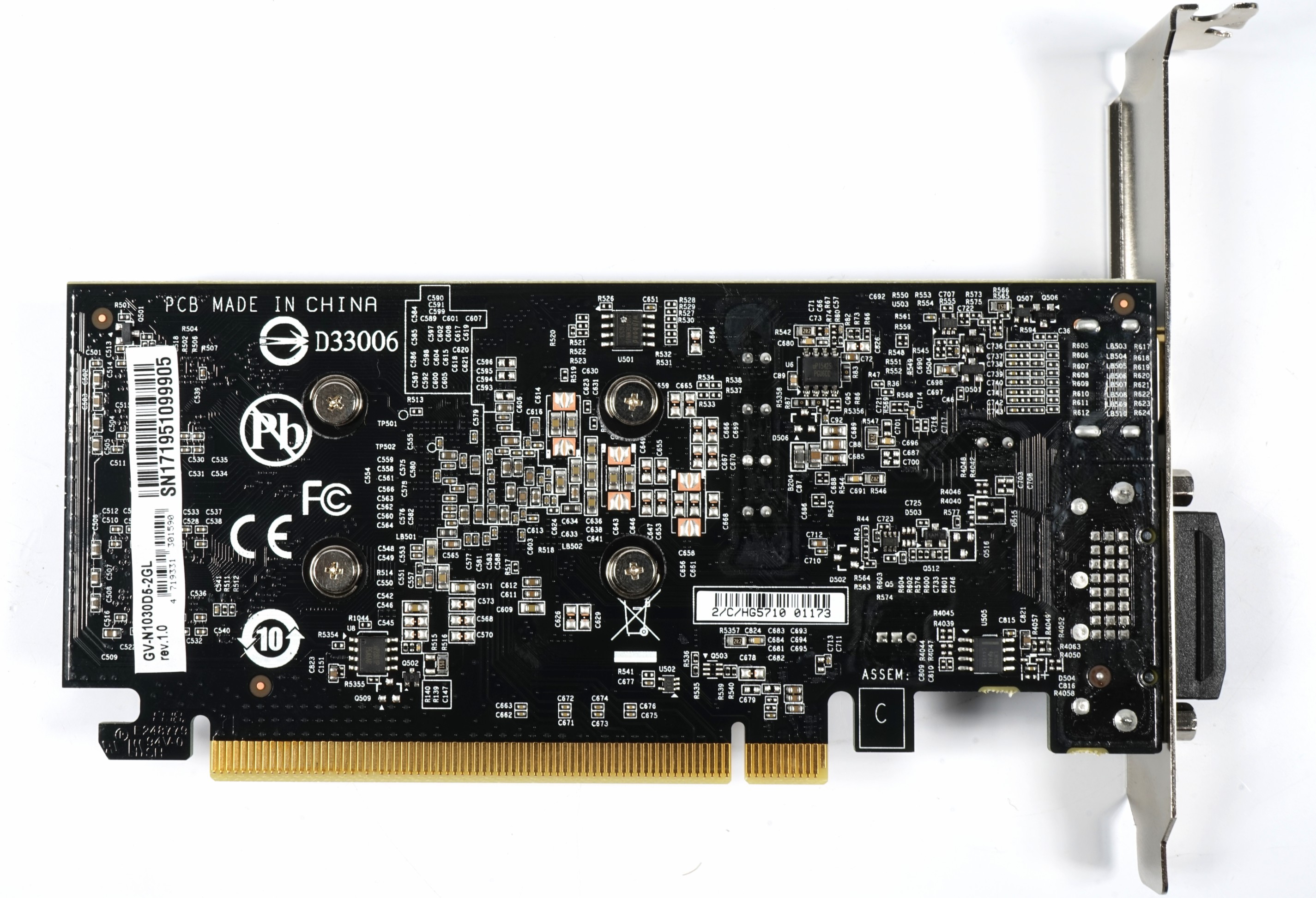 |
The back side dispenses with a backplate and, like the front side, any optical nick-shack.

The card, which is powered exclusively from the motherboard slot, does not have power supply connections. The only element that still stands out is the connection line for the fan including socket and plug.

The air flow is carried exclusively horizontally, whereby a large part of the air together with the waste heat carried is pressed in the direction of the housing side wall. The card has a single dual-link DVI-I on the slot panel without an analog signal, as well as a simple HDMI 2.0b port.
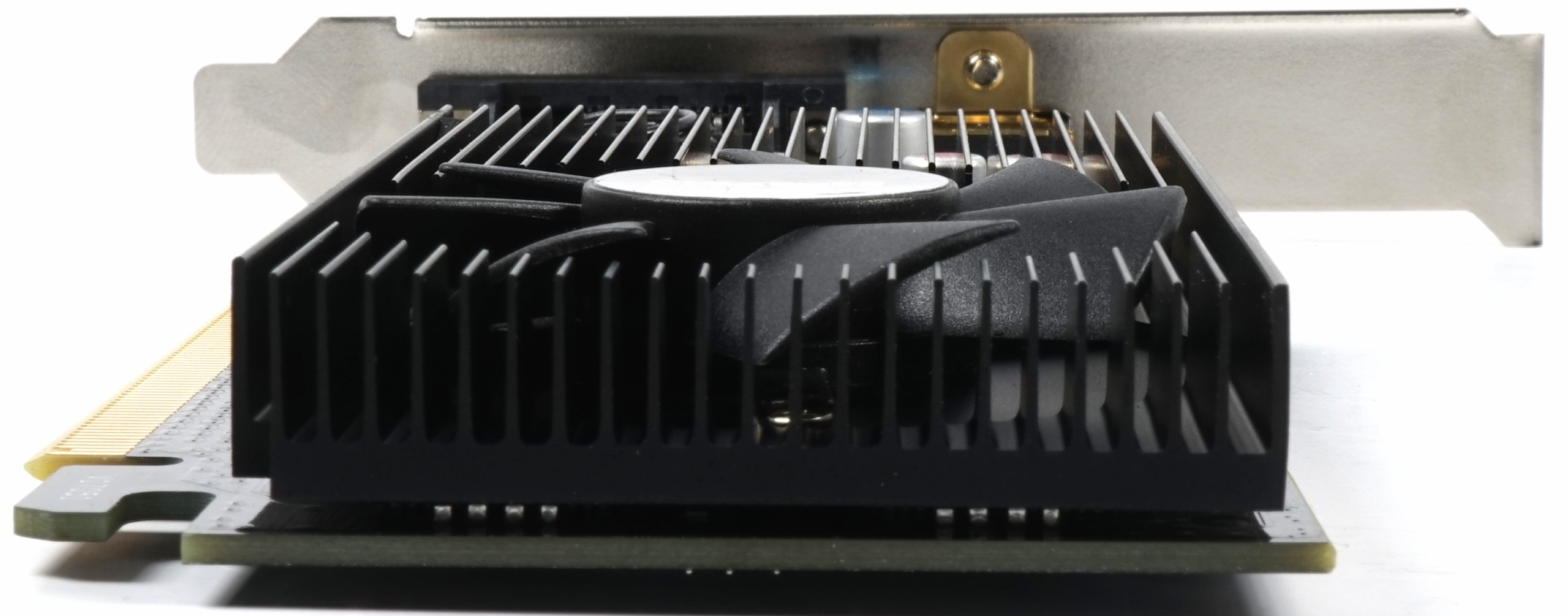 |
 |
The Gigabyte GT 1030 Low Profile Silent
The passive map shines in contrast to the slender airflow activist with rather baroque shapes and 336 grams of live weight. Here, too, the low-profile form factor is fully adhered to with 6.5 cm (from top of the motherboard slot to top edge cooler). However, the length increases to 17.5 cm (from the outside of the slot panel to the end of the cooler)
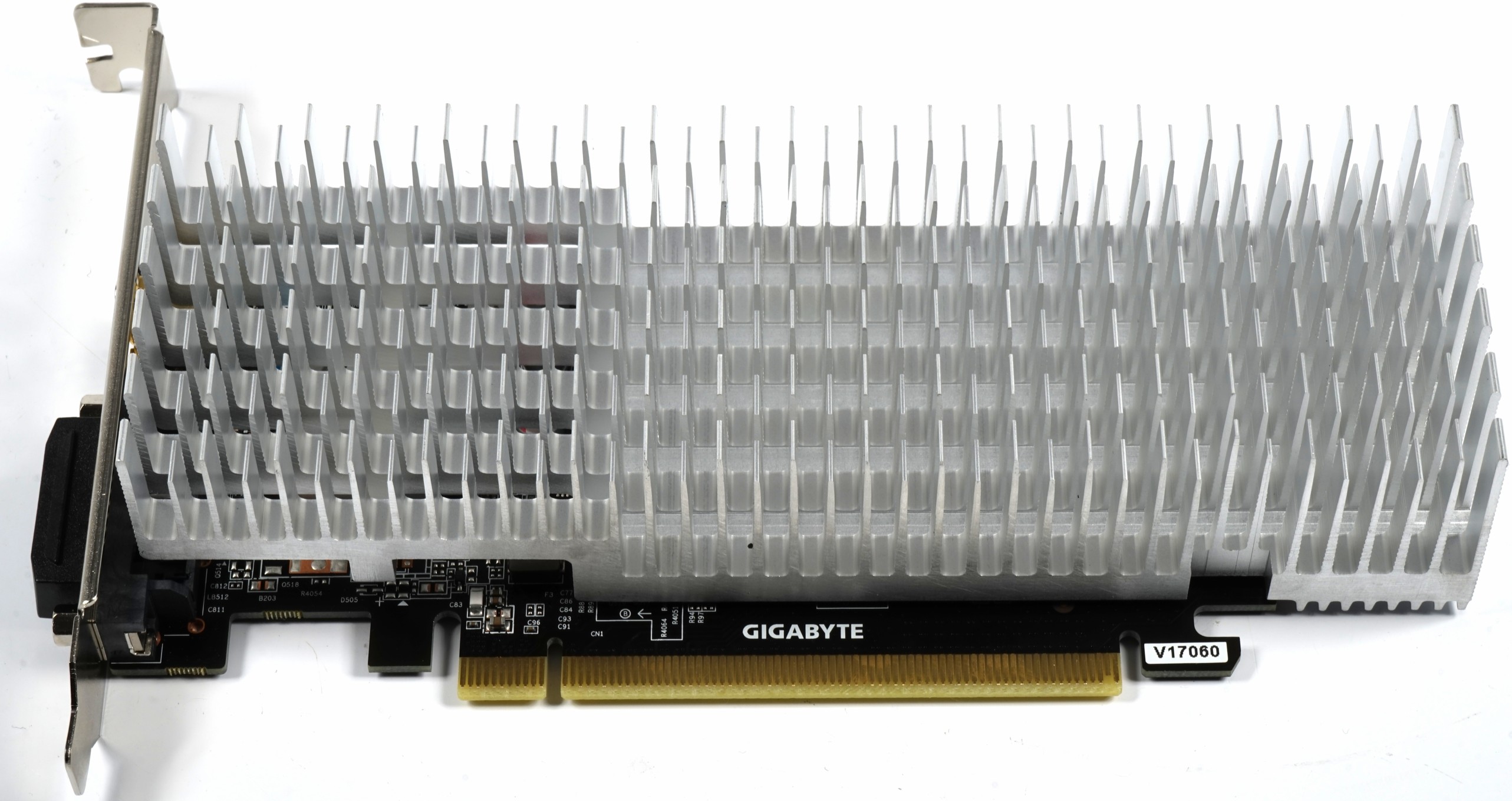
The depth is due to the expansive hips of the cooler, whose hedgehog design spreads the cooling bristles to at least 3.5 cm. This card then has an exact dual-slot design. Here, too, the long slot panel can of course be replaced with the shorter one from the supplied accessories.
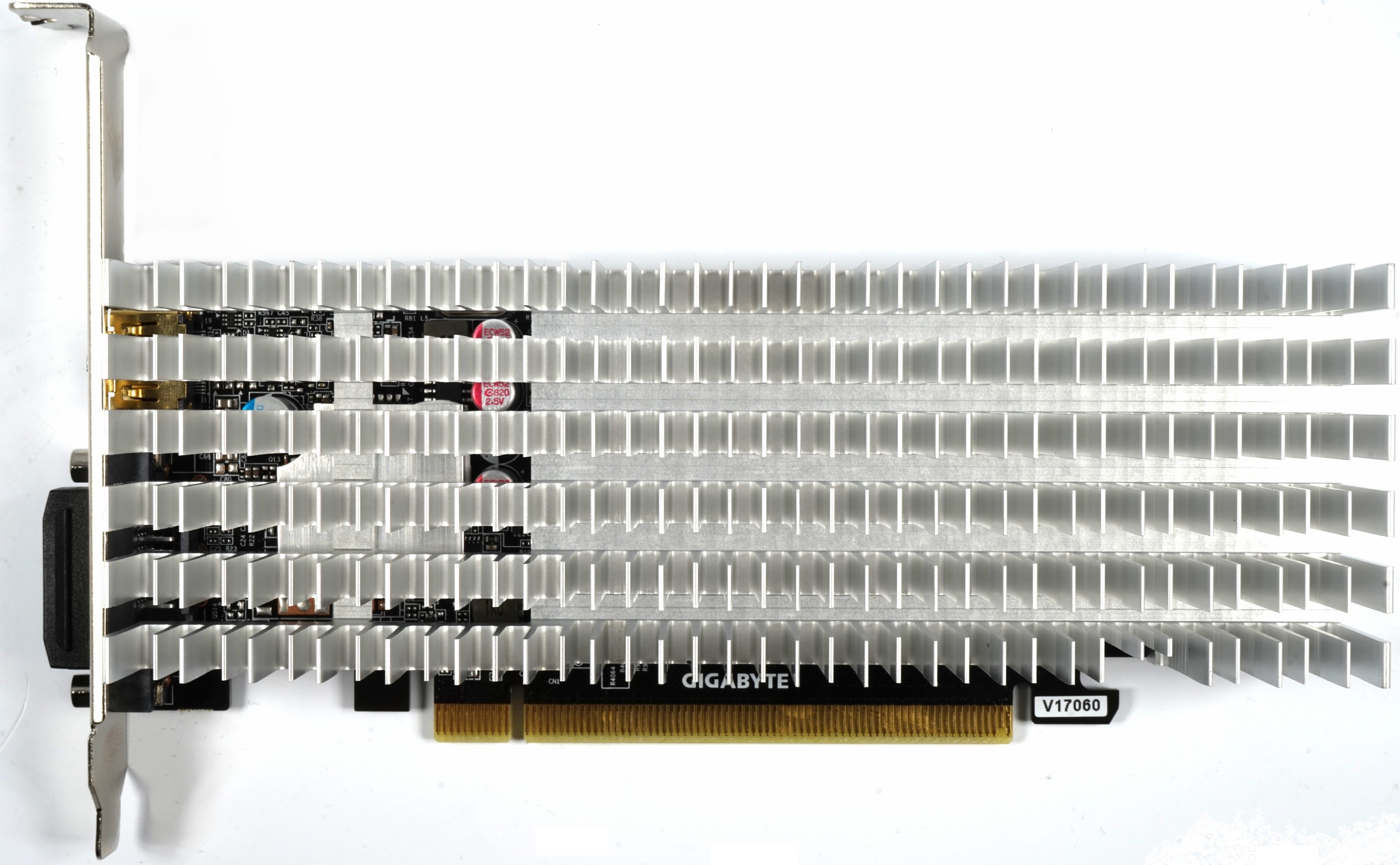 |
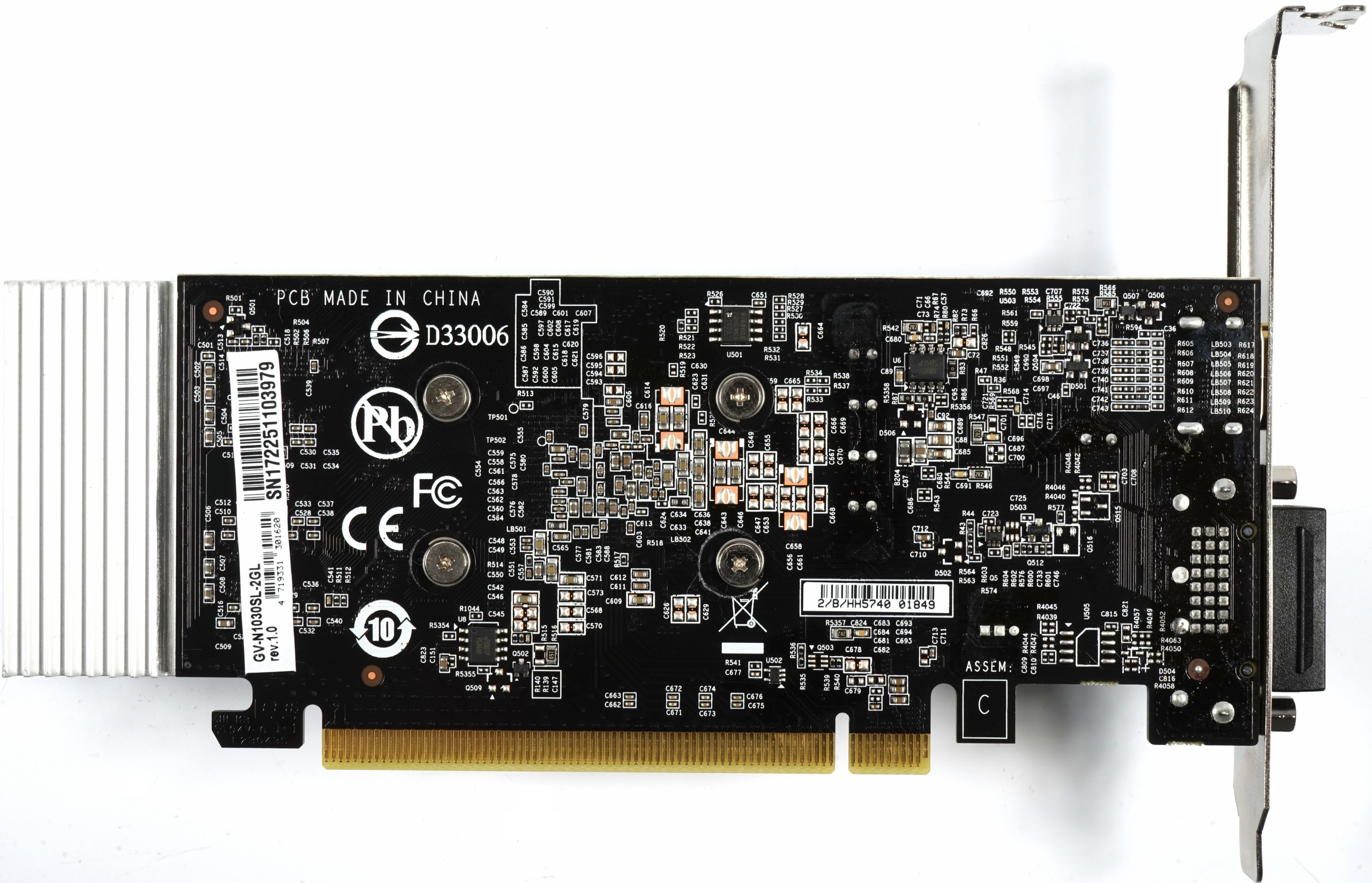 |
The only difference of the otherwise completely identical board is the missing fan connection with this card. That's why Gigabyte omitted the socket, even though the printed circuit board also provides it.

The cooler has an interesting slat design. All cooling flags are interrupted horizontally and vertically, so that the direction of an airflow (or convection) does not matter and the cooler always performs approximately as well. More on that later.

The card also has a single dual-link DVI-I on the slot panel without an analog signal, as well as a simple HDMI 2.0b port. That must be enough.
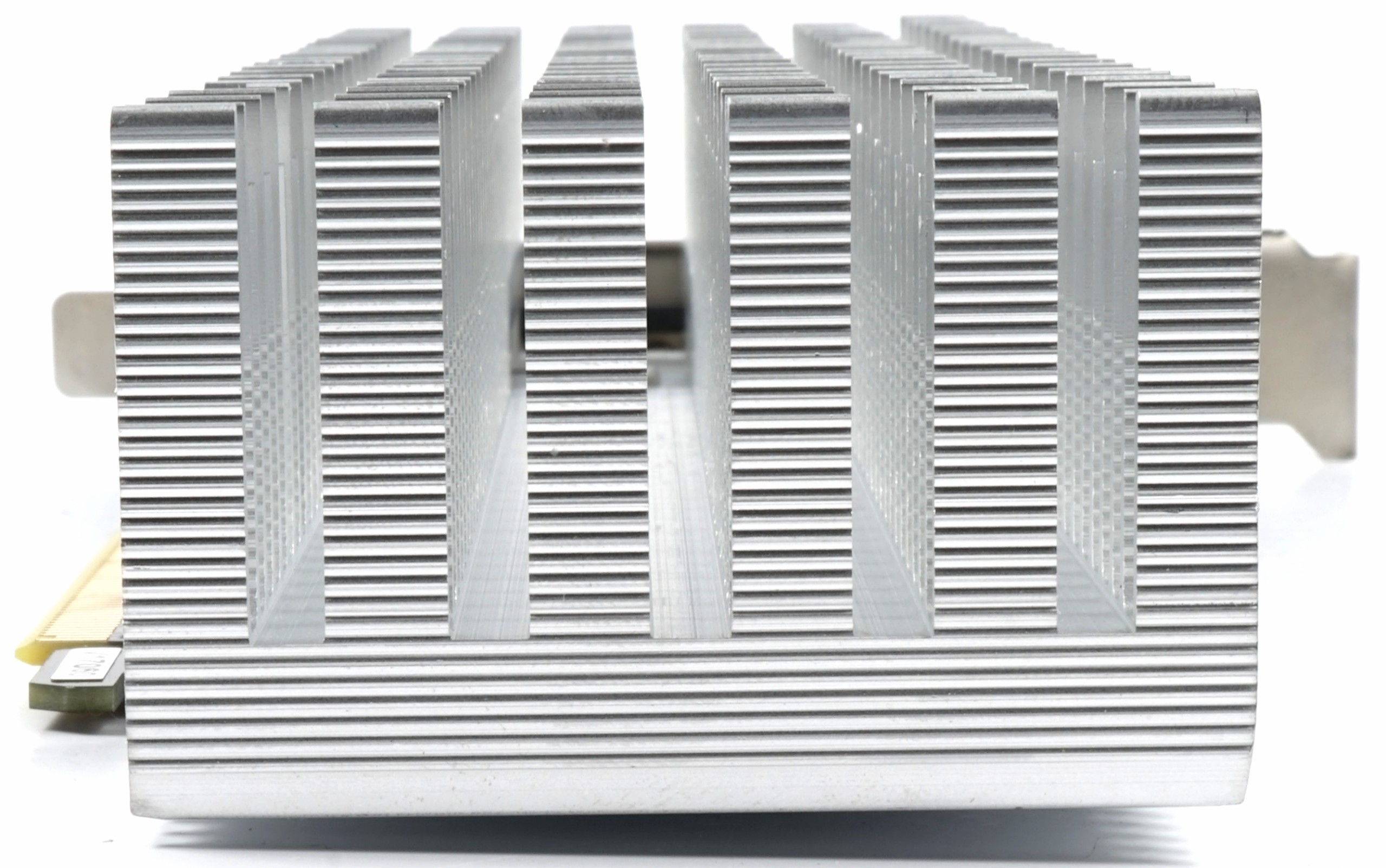 |
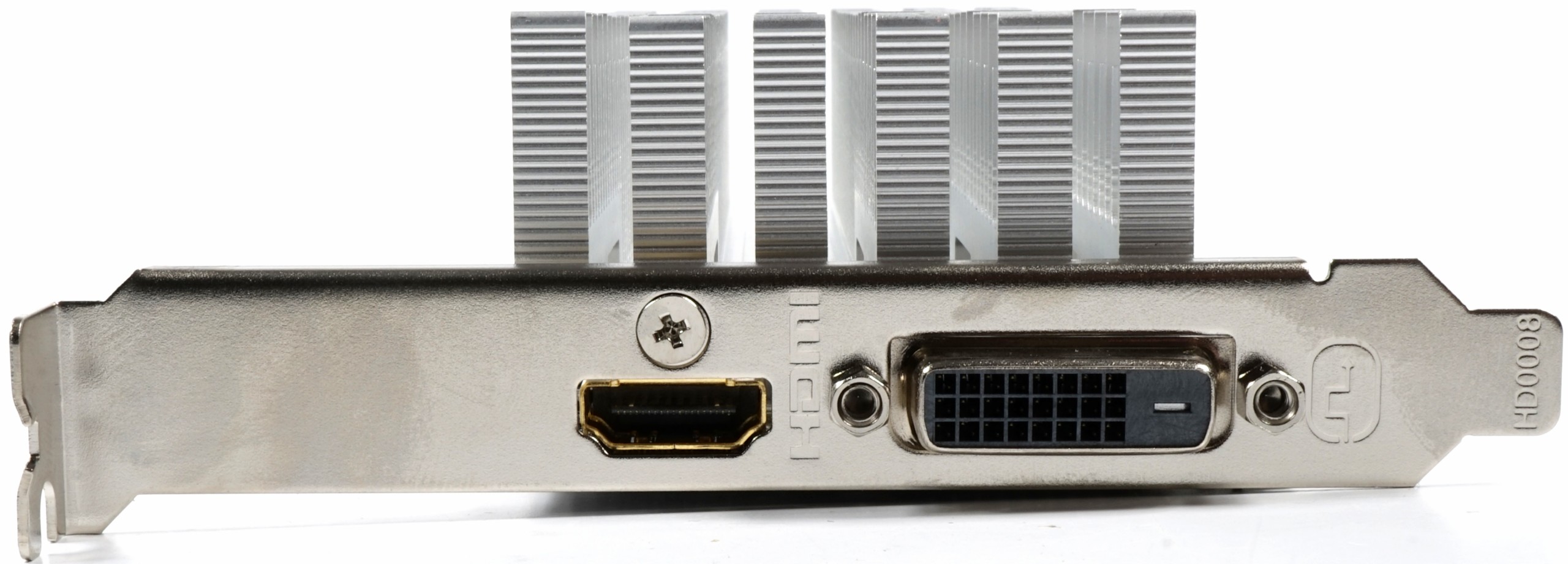 |
Both cards are therefore also excellent for HTPCs, because the 4K resolution can still be supplied at 60 Hz.
The board layout
The two identically equipped boards have hardly any special features, but nevertheless we have looked at them as always more closely.
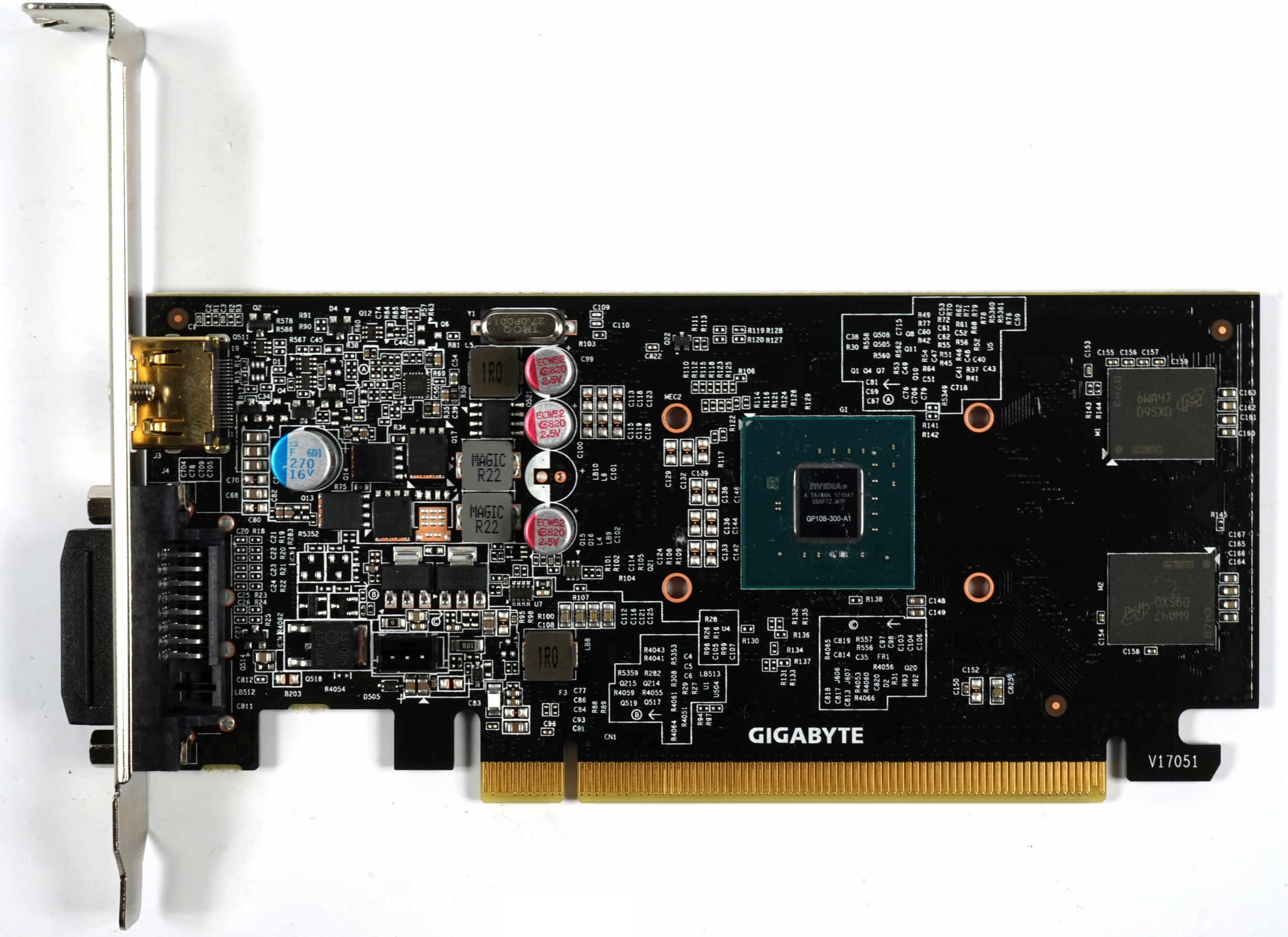
Gigabyte originally only saw one phase for the GPU supply, but for thermal reasons it was again realized as a two-phase voltage converter to avoid extreme thermal hotspots. They are controlled by a small uP1666 from UPI Semiconductor., which takes over the task of the PWM controller. A 6414 works on the low-side and a 6508 from Alpha & Omega Semiconductor on the Hgh side.
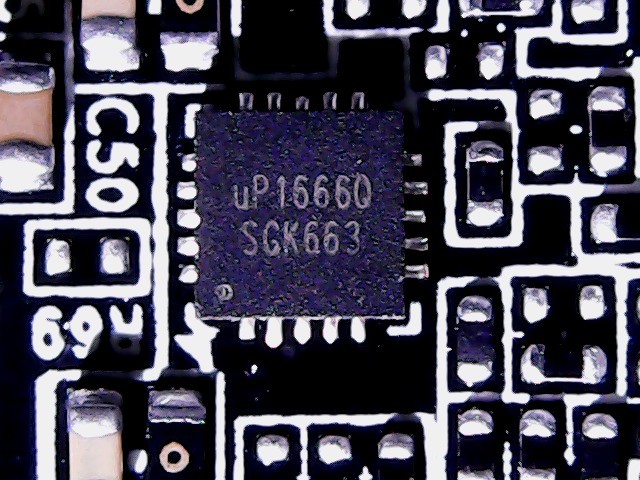 |
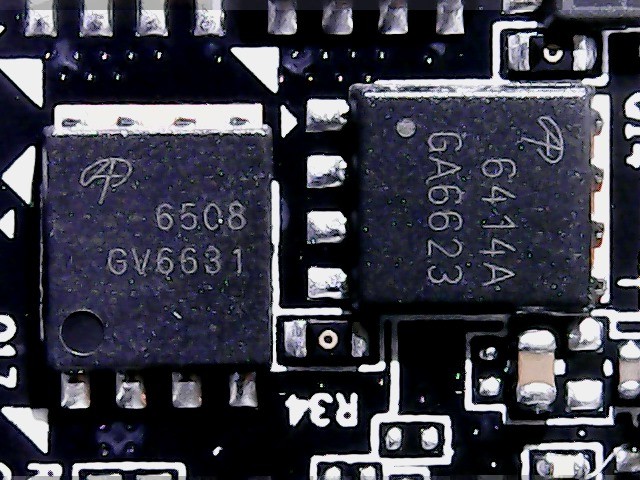 |
Foxconn's Magic Coils do what they're supposed to do, no more, but no less. and certainly no noise At the flowing currents here they are completely inaudible.
The memory used comes from Micron. A total of two GDDR5 modules, each with 1 GB of storage capacity and an effective clock of 6000 MHz, result in the 2GB memory expansion of the GeForce GT 1030, which has already been mentioned.
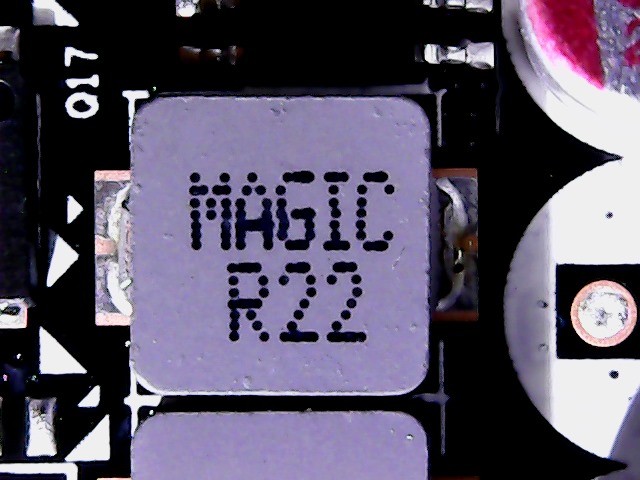 |
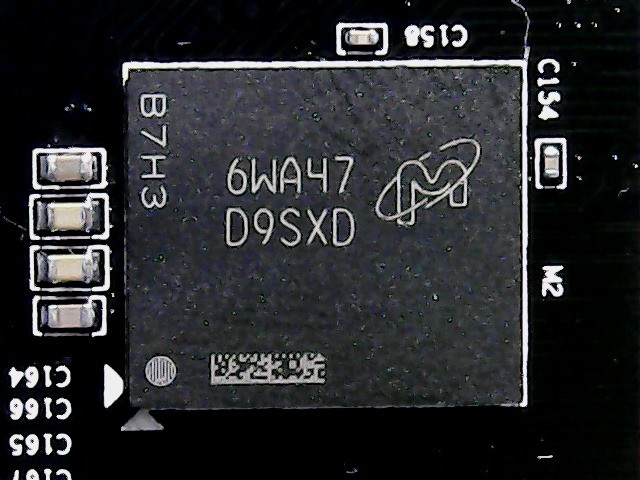 |
The PWM memory controller is hidden on the back of the board. UPI Semiconductor's uP1542 is a simple single-buck controller that has to control a single phase to power the memory. High- and low-side are realized together by a UM3202, which is a fast-switching dual-N-channel MOSFET. The caps are the usual mugware and low-priced mediocrity.
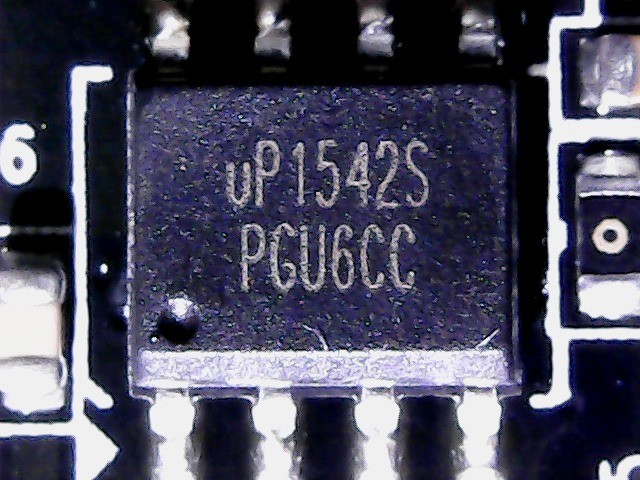 |
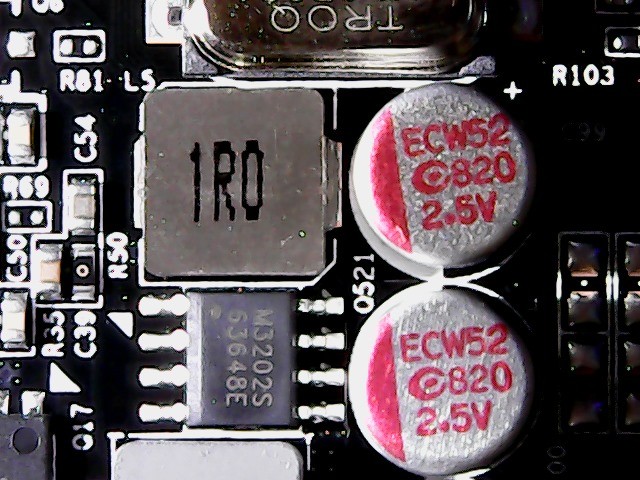 |
The two coolers
The cooler of both cards is made of stranded aluminium and is very different from each other. The active card uses a cow body made of blackened aluminium, which is only 9 cm long and therefore does not cover the voltage converters. However, it would not be longer, because capacitors and spuelen would stand in the way. The 5 cm fan is embedded in the cooler and with its 7 thick blades is designed for maximum throughput.
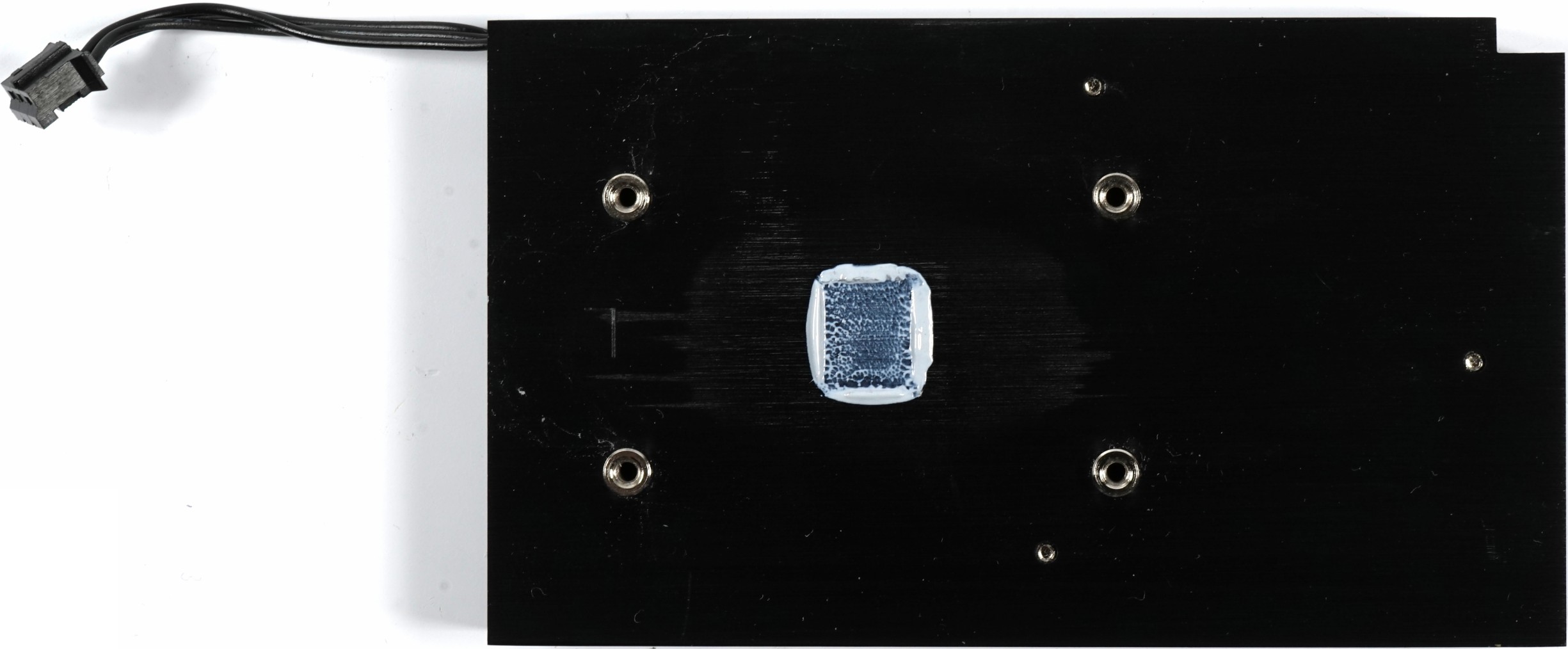
We can already see the 17 cm long and 3.2 cm thick passive heat sink, how a VRM heatsink was worked out again. The surface is not treated. The sensor-like cooling compartments have on their part once again a one-sided, pronounced groove structure, which helps to significantly enlarge the surface.
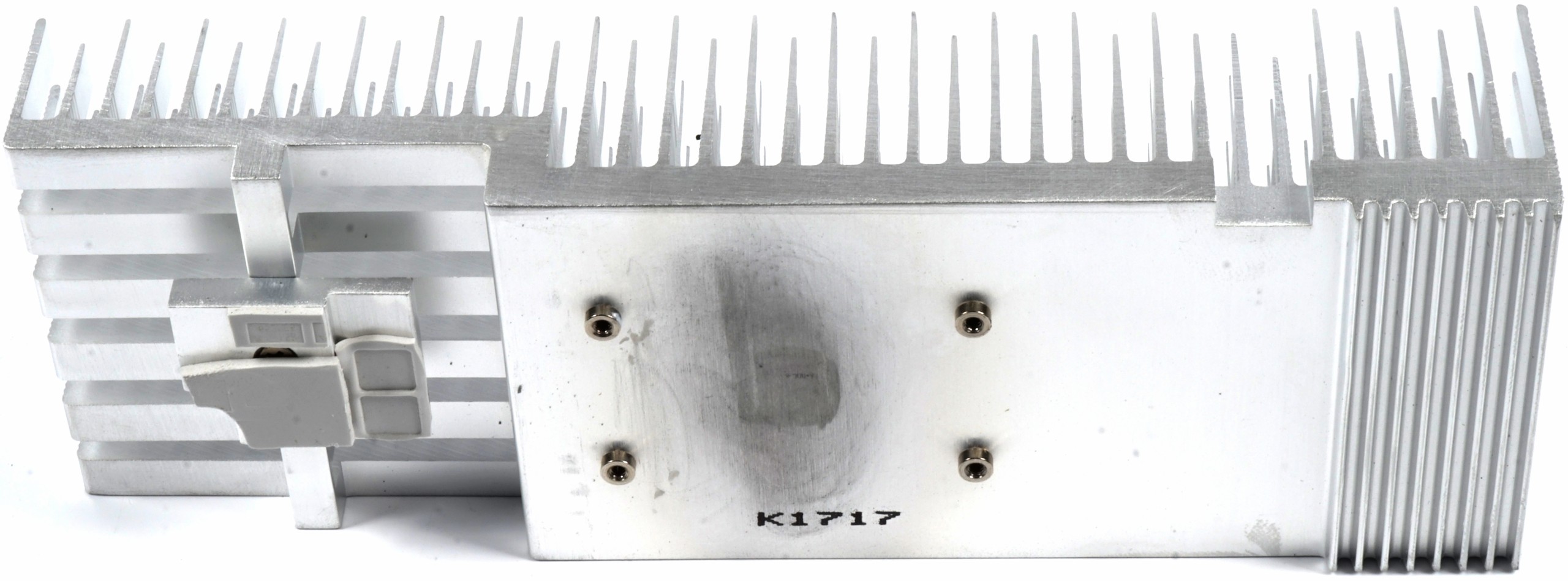
From a purely visual lynot, the passive cooler already makes the more potent impression, but that can also be deceiving. But that's exactly what we'll have our exact measurements and infrared thermal images for later.
































Kommentieren